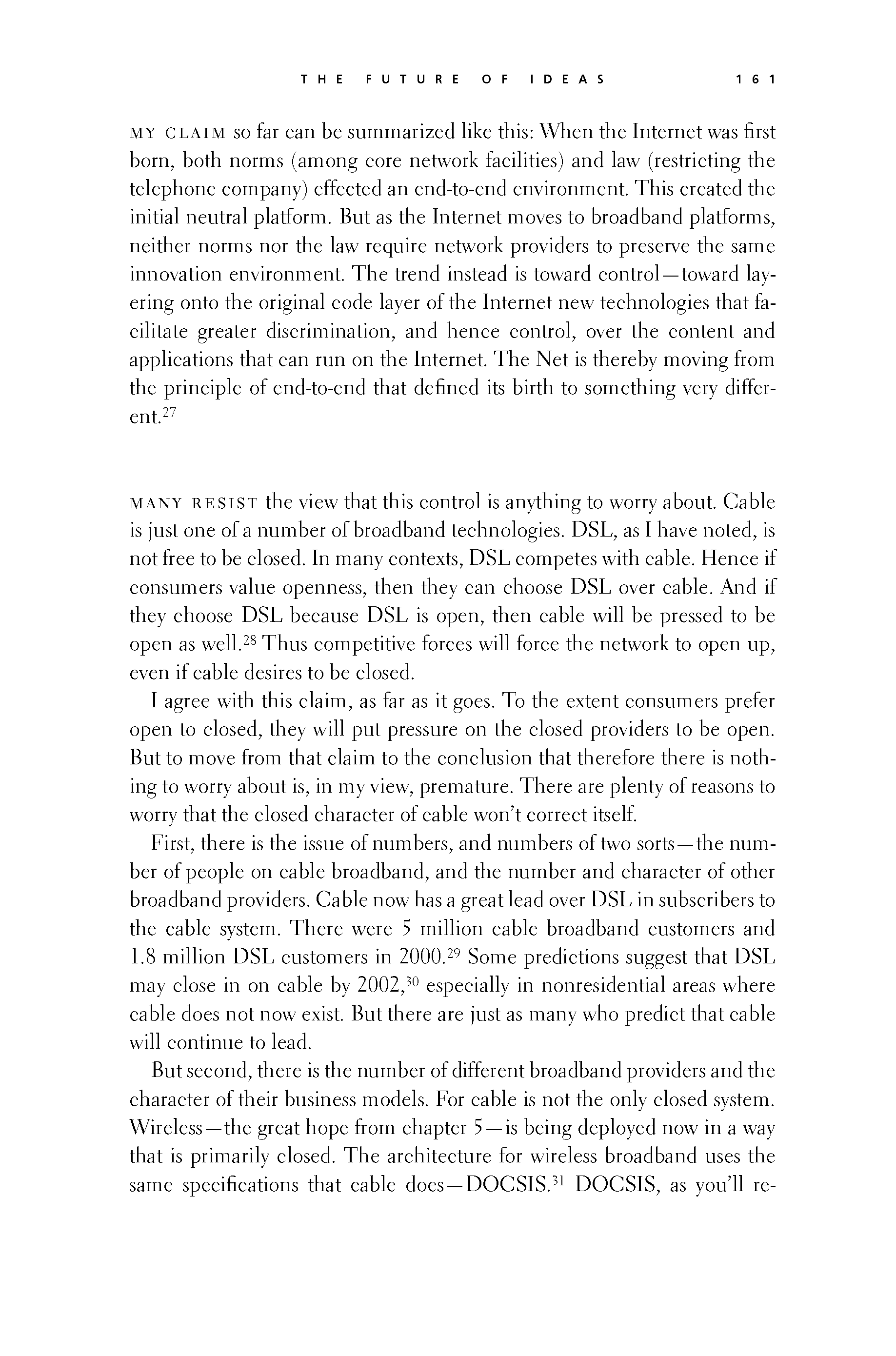 p160 _
-chap- _
toc-1 _
p161w _
toc-2 _
+chap+ _
p162
p160 _
-chap- _
toc-1 _
p161w _
toc-2 _
+chap+ _
p162
///\\\
My claim so far can be summarized like this: When the Internet was first
born, both norms (among core network facilities) and law (restricting the
telephone company) effected an end-to-end environment. This created the
initial neutral platform. But as the Internet moves to broadband platforms,
neither norms nor the law require network providers to preserve the same
innovation environment. The trend instead is toward control -- toward lay-
ering onto the original code layer of the Internet new technologies that fa-
cilitate greater discrimination, and hence control, over the content and
applications that can run on the Internet. The Net is thereby moving from
the principle of end-to-end that defined its birth to something very differ-
ent.[10-27]
///\\\
Many resist the view that this control is anything to worry about. Cable
is just one of a number of broadband technologies. DSL, as I have noted, is
not free to be closed. In many contexts, DSL competes with cable. Hence if
consumers value openness, then they can choose DSL over cable. And if
they choose DSL because DSL is open, then cable will be pressed to be
open as well.[10-28] Thus competitive forces will force the network to open up,
even if cable desires to be closed.
I agree with this claim, as far as it goes. To the extent consumers prefer
open to closed, they will put pressure on the closed providers to be open.
But to move from that claim to the conclusion that therefore there is noth-
ing to worry about is, in my view, premature. There are plenty of reasons to
worry that the closed character of cable won't correct itself.
First, there is the issue of numbers, and numbers of two sorts -- the num-
ber of people on cable broadband, and the number and character of other
broadband providers. Cable now has a great lead over DSL in subscribers to
the cable system. There were 5 million cable broadband customers and
1.8 million DSL customers in 2000.[10-29] Some predictions suggest that DSL
may close in on cable by 2002,[10-30] especially in nonresidential areas where
cable does not now exist. But there are just as many who predict that cable
will continue to lead.
But second, there is the number of different broadband providers and the
character of their business models. For cable is not the only closed system.
Wireless -- the great hope from Chapter 5 -- is being deployed now in a way
that is primarily closed. The architecture for wireless broadband uses the
same specifications that cable does -- DOCSIS.[10-31] DOCSIS, as you'll re-
[[161]]
p160 _
-chap- _
toc-1 _
p161w _
toc-2 _
+chap+ _
p162